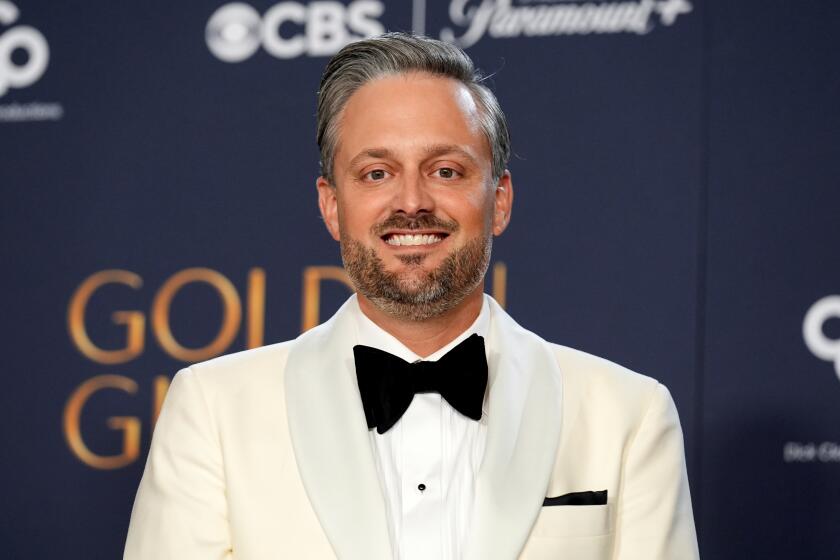Despite ‘Hobbit’ backlash, RED still pushing 120-fps home projector
- Share via
Back in 2012, before director Peter Jackson’s “Hobbit” made its widely panned 48-frame-per-second debut, arguably the most talked-about gadget at that year’s National Assn. of Broadcasters conference in Las Vegas was the prototype for RED’s laser cinema projector.
Capable of displaying 4K resolution—the virtual equivalent of film—up to 120 frames per second in both 2-D and 3-D capabilities with a price point under $10,000, the prototype appeared to signal the company’s first foray into the home consumer market—another sign of its impending technological dominance.
RED, the L.A.-based optics and tech company owned by Oakley founder and billionaire Jim Jannard, had a history of making waves at NAB. At the 2007 conference, RED debuted the prototype for its RED One camera. With roughly four times the number of pixels as its closest HD competitors, the RED One was the first digital camera to match the quality of 35mm film—with a price tag under $30,000.
ON LOCATION: Where the cameras roll
The camera single-handedly killed the idea of “digital” being a dirty word in Hollywood.
The timing of the projector appeared fortuitous. Jackson’s 48-frames-per-second experiment -- twice the standard frame rate of traditional film -- was then still widely anticipated.
A new technological wave of cinema was upon us, and RED was poised to capture a huge corner of the market share.
One year later, however, there was little mention of the projector at this year’s NAB. The reason seems apparent – the reviews on Jackson’s 48-fps experiment were poor.
RED, however, has yet to answer the obvious question: Did the backlash against “The Hobbit” delay or alter plans for high-tech home projection?
RED spokesman Ted Schilowitz says no.
“There was no pushback or concern,” he said. “Sometimes things don’t happen as fast as you hope they will. This is a technology delay. The most important thing is making sure you hit your quality target.”
He also dismisses the notion that the consumer market isn’t ready for the new wave of technology in cinema.
“Just look at the box office. Any backlash is just lip flap,” he said. “‘The Hobbit’ was a movie from the future, by the future. Movies are shot in 24 frames, but they don’t have to be.”
For now, however, the status quo will remain.
RED’s Epic – the camera Jackson used to shoot “The Hobbit” – is getting plenty of work. Michael Bay’s “Pain & Gain,” Baz Lurhmann’s “The Great Gatsby,” and J.J. Abrams’ “Star Trek: Into Darkness” were all shot with the Epic, but will screen in standard 24 frame format.
“The two guys that are perfecting frame rate are Jackson and James Cameron,” Schilowitz said. “You’d be hard-pressed to pick two more talented people in Hollywood to work things out.”
And when they finally do, Schilowitz says RED will be ready for them.
ALSO:
Zach Braff tries to Kickstart ‘Garden State’ follow-up
Attention comedy geeks: Splitsider enters film distribution business
‘Oz the Great and Powerful’: Zach Braff on talking monkeys, bodysuits
Follow Matthew Fleischer on Twitter @Mattefleischer
More to Read
From the Oscars to the Emmys.
Get the Envelope newsletter for exclusive awards season coverage, behind-the-scenes stories from the Envelope podcast and columnist Glenn Whipp’s must-read analysis.
You may occasionally receive promotional content from the Los Angeles Times.






